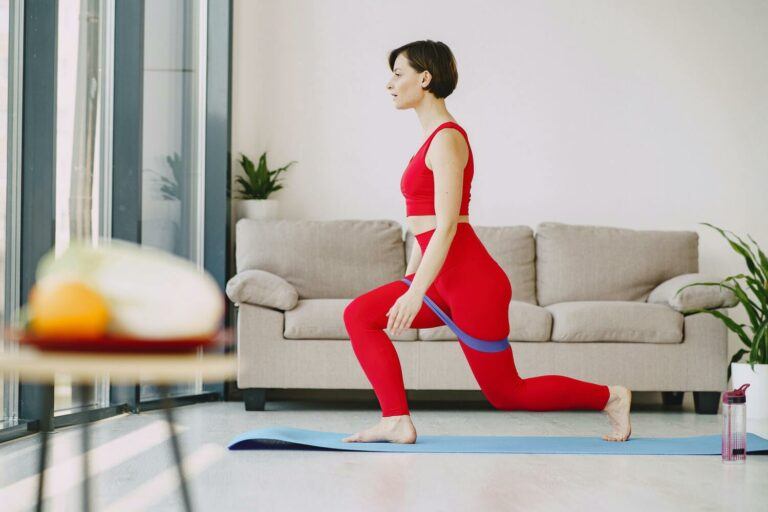The desire to get fit and improve your health is a common one.
But between busy schedules, gym anxiety, and the cost of memberships, starting and sticking to a workout routine can feel overwhelming.
That’s where home workout equipment comes in.

We’ll explore the numerous benefits of investing in home gym equipment, from saving you time and money to boosting your motivation and overall well-being.
Whether you’re a seasoned gym-goer or a complete beginner, a home gym can be a valuable asset in your fitness journey.
Key Takeaways:
- Home workout equipment offers convenience and flexibility, allowing you to work out on your own schedule in the comfort of your home.
- Compared to gym memberships, home gyms can be a cost-effective solution in the long run, especially if you factor in commute times and potential personal trainer fees.
- Home gyms can help you overcome gym intimidation and create a more private workout environment.
- Having readily available equipment can increase workout consistency and motivation.
- Home gyms allow for personalized workouts tailored to your specific fitness goals.
Gym Membership vs. Home Gym Equipment: A Cost Comparison
While the initial cost of home gym equipment might seem daunting, it’s important to consider it as an investment in your health.
Here’s a table to illustrate the potential cost breakdown:
| Factor | Gym Membership | Home Gym Equipment |
|---|---|---|
| Monthly Fee | $30 – $100+ | None (after initial purchase) |
| Contract Length | 12 months (typical) | None |
| Enrollment Fee | $0 – $100+ | None |
| Personal Training | Additional cost | Optional |
| Commute Time | Gas/Public transport | None |
Here’s an example: Let’s say you spend $50 a month on a gym membership and another $20 a month on gas for commuting.
Over a year, that’s $840.
A basic home gym setup with resistance bands, dumbbells, and a yoga mat could cost around $300 upfront.
Even factoring in the cost of additional equipment over time, a home gym can become a more cost-effective option in the long run, especially if you prioritize consistent workouts.

Success Stories
Sarah Jones, a busy working mom, found it challenging to maintain a gym routine due to her hectic schedule.
Investing in a set of dumbbells and resistance bands for her home allowed her to squeeze in short but effective workouts whenever she had a spare moment.
Within a few months, Sarah noticed significant improvements in her strength, energy levels, and overall well-being.

David Lee, once intimidated by the crowded atmosphere of gyms, found his confidence soar after creating a home gym.
Utilizing online workout programs and adjustable dumbbells, David built a personalized workout routine that fit his comfort level and goals.
He now enjoys a regular exercise routine without the gym anxiety.

Overcoming Challenges:
- Staying Motivated: Working out at home requires self-discipline. Utilize workout apps with progress trackers, set realistic goals, and reward yourself for reaching milestones. Online fitness communities can also provide support and motivation.
- Finding Workout Space: Even in small spaces, you can create a functional home gym. Look for equipment like foldable exercise bikes, resistance bands, and yoga mats that require minimal storage. Utilize bodyweight exercises for a complete workout without any equipment.
FAQs
Q: I have limited space. Can I still create a home gym?
Absolutely! There are many space-saving equipment options available, like resistance bands, yoga mats, and foldable exercise bikes. You can also utilize bodyweight exercises for a complete workout without any equipment.
Q: Will home gym equipment keep me motivated?
While having equipment readily available is a plus, motivation ultimately comes from within. However, home gyms allow you to personalize your workouts and listen to your body, which can make exercise more enjoyable and sustainable. Additionally, there are many online workout programs and fitness apps designed for home exercise that can provide guidance and keep things interesting.
Q: Can home gym equipment replace a personal trainer?
For some people, home gym equipment can be sufficient. However, if you need personalized guidance on form, technique, or creating a specific workout plan, a personal trainer can be a valuable resource. You can even consider a hybrid approach, using a trainer for initial guidance and then utilizing your home gym for ongoing workouts.
Building Your Home Gym: A Beginner’s Guide

Now that you’re convinced of the benefits of home workout equipment, you might be wondering where to begin.
Here’s a breakdown to help you build your home gym on a budget and according to your fitness goals:
1. Define Your Fitness Goals:
Are you aiming for weight loss, muscle building, improved cardiovascular health, or overall flexibility? Knowing your goals will guide your equipment choices.
- Weight Loss: Focus on cardio equipment like jump ropes, stationary bikes, or rowing machines, along with free weights for strength training.
- Muscle Building: Prioritize free weights like dumbbells, barbells (with weight plates), and kettlebells. A weight bench can also be beneficial.
- Cardiovascular Health: Cardio equipment like treadmills, elliptical trainers, or exercise bikes are great options.
- Flexibility: Yoga mats, resistance bands, and foam rollers are ideal for stretching and improving flexibility.
2. Start Simple:
There’s no need to overwhelm yourself with a full gym setup right away. Begin with versatile equipment like:
- Resistance bands: Great for strength training, stretching, and mobility exercises.
- Dumbbells: Available in various weights, allowing you to progress as you get stronger.
- Yoga mat: Perfect for bodyweight exercises, yoga routines, and core strengthening.
- Jump rope: A simple and effective tool for cardio workouts that improves coordination.
3. Consider Additional Equipment (Optional):
As you progress, you can incorporate more specific equipment based on your goals (mentioned above).
4. Utilize Online Resources:
There’s a wealth of free workout routines available online designed specifically for home exercise.
Utilize fitness apps, YouTube channels, or websites that cater to your goals and equipment availability.
5. Prioritize Safety and Form:
While working out at home allows for flexibility, it’s crucial to prioritize proper form to avoid injuries.
Focus on controlled movements and don’t hesitate to research exercises online or consult a trainer for guidance on proper technique.
Remember, consistency is key! Even short, regular workouts with your home gym equipment can yield significant results.
Conclusion
Investing in home workout equipment is an investment in your health and well-being.
It empowers you to create a personalized fitness routine that fits your schedule and preferences.
With dedication and the right tools, you can achieve your fitness goals and experience the numerous benefits of working out at home.




